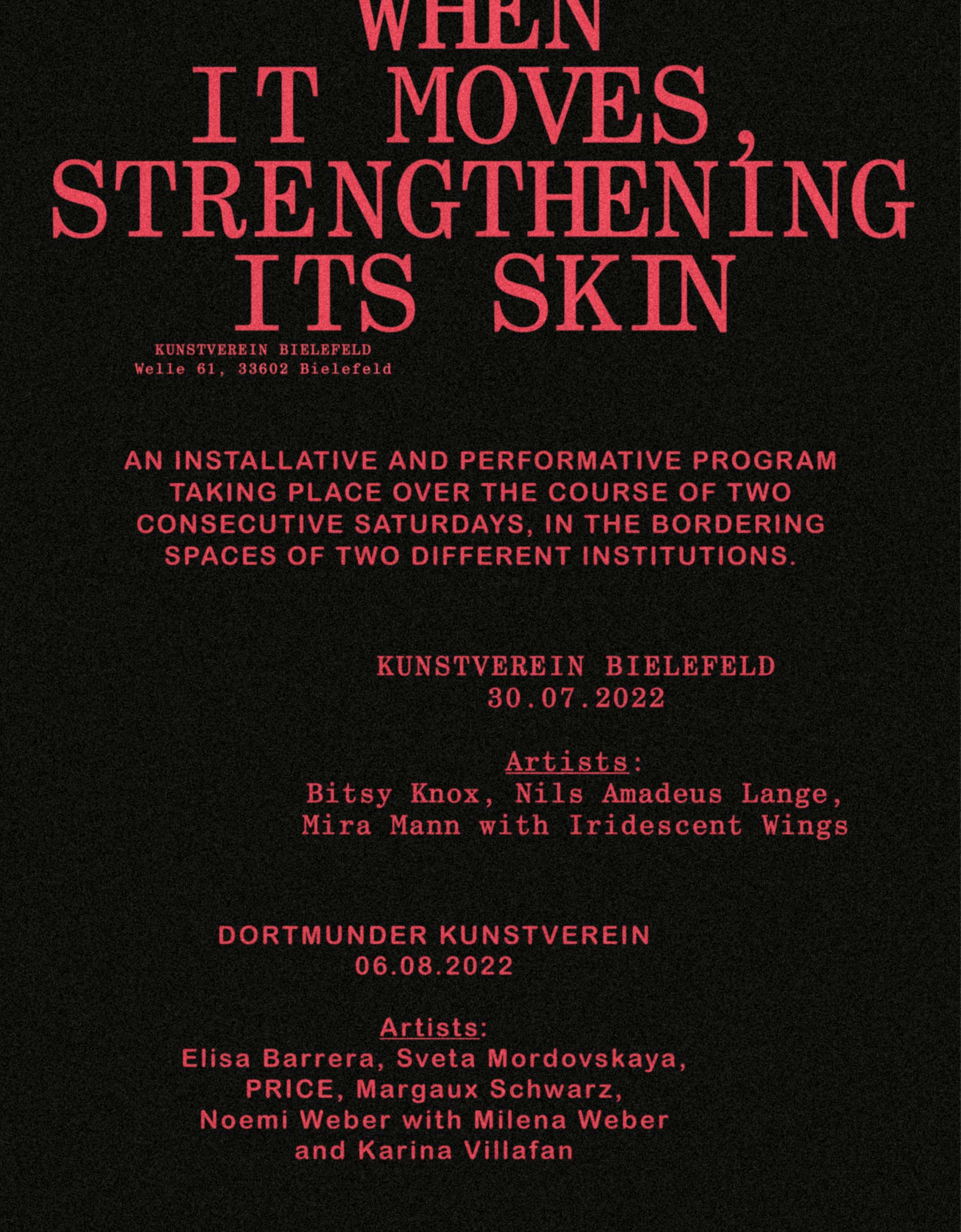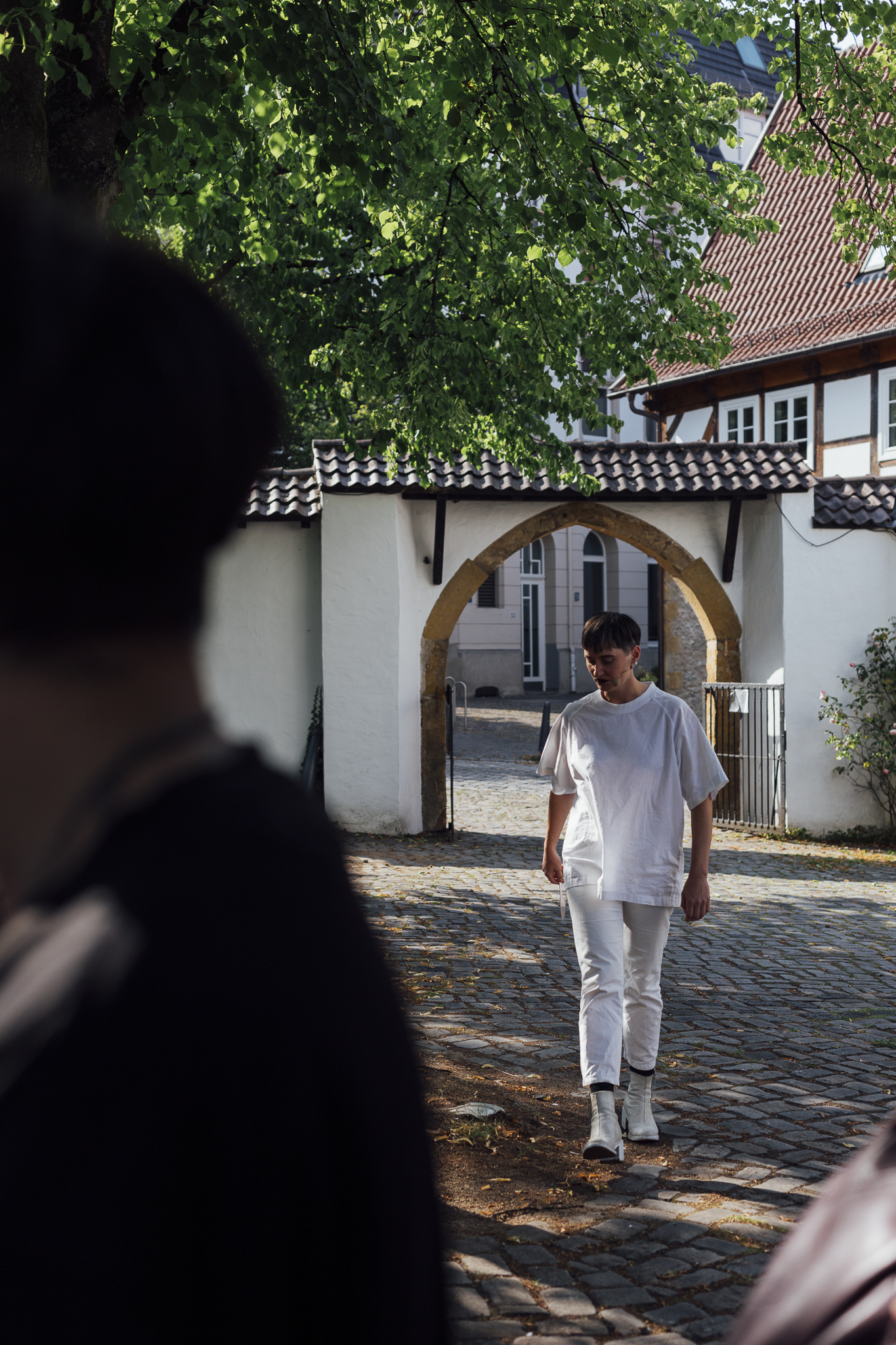
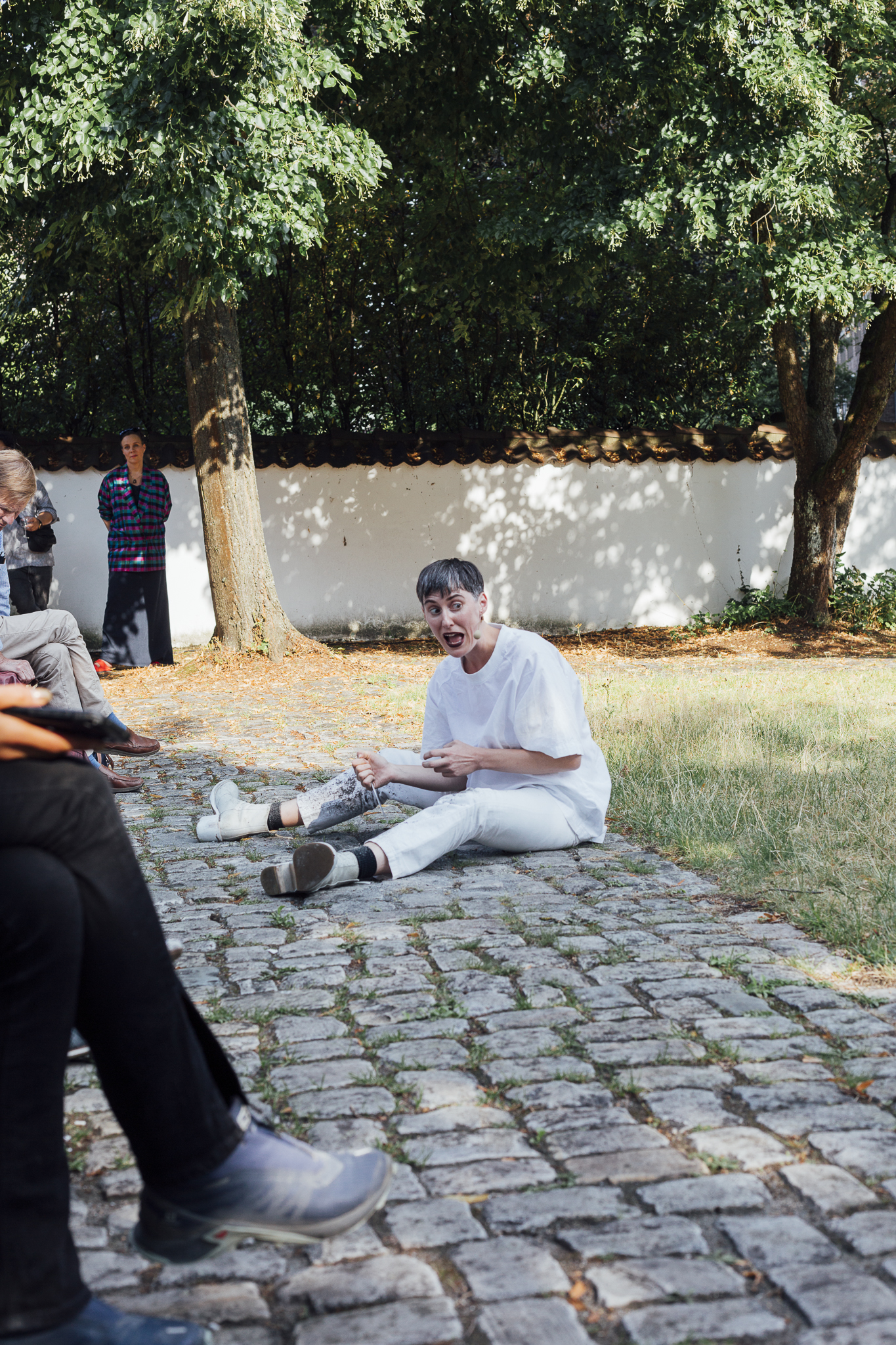
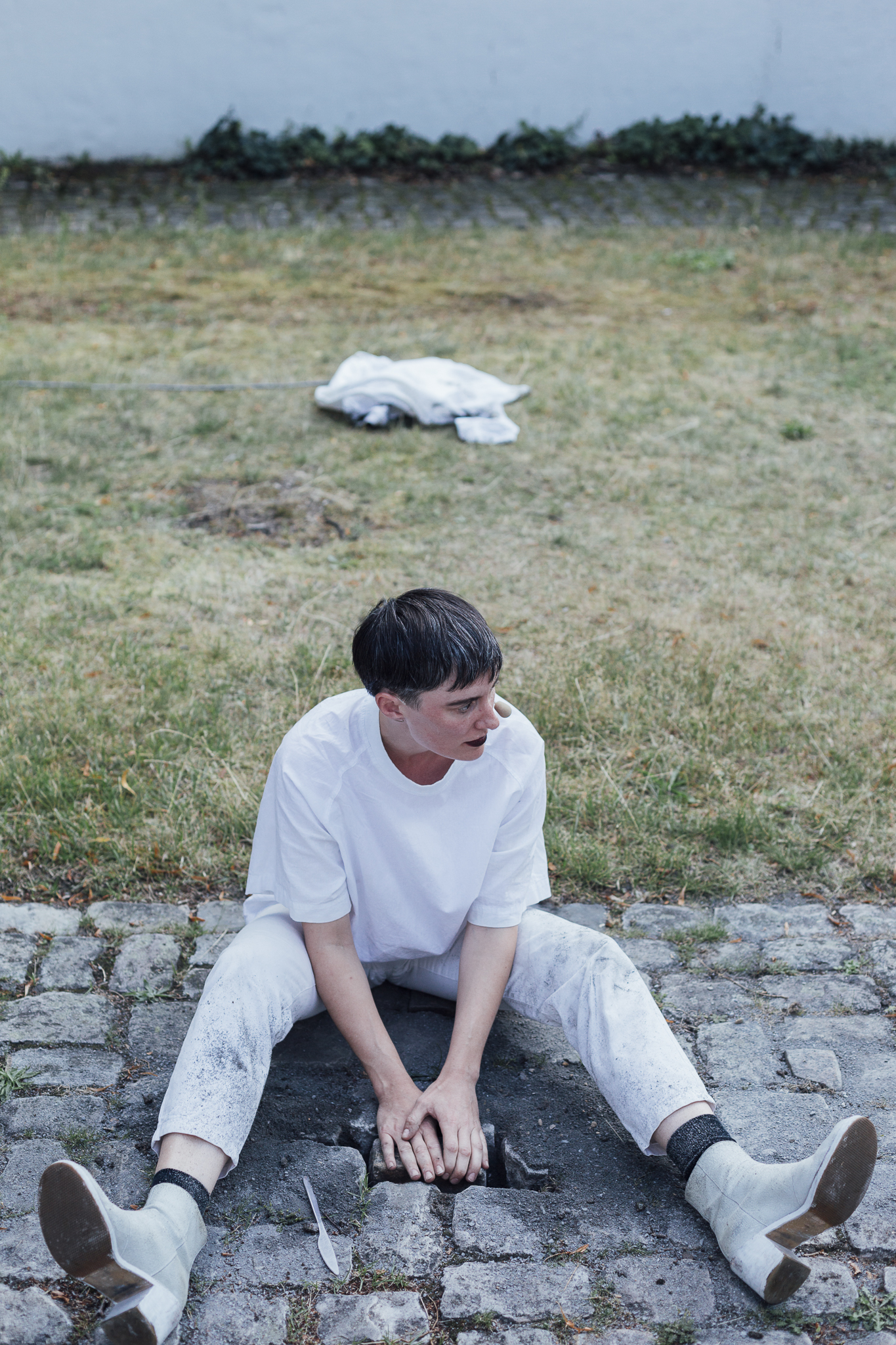
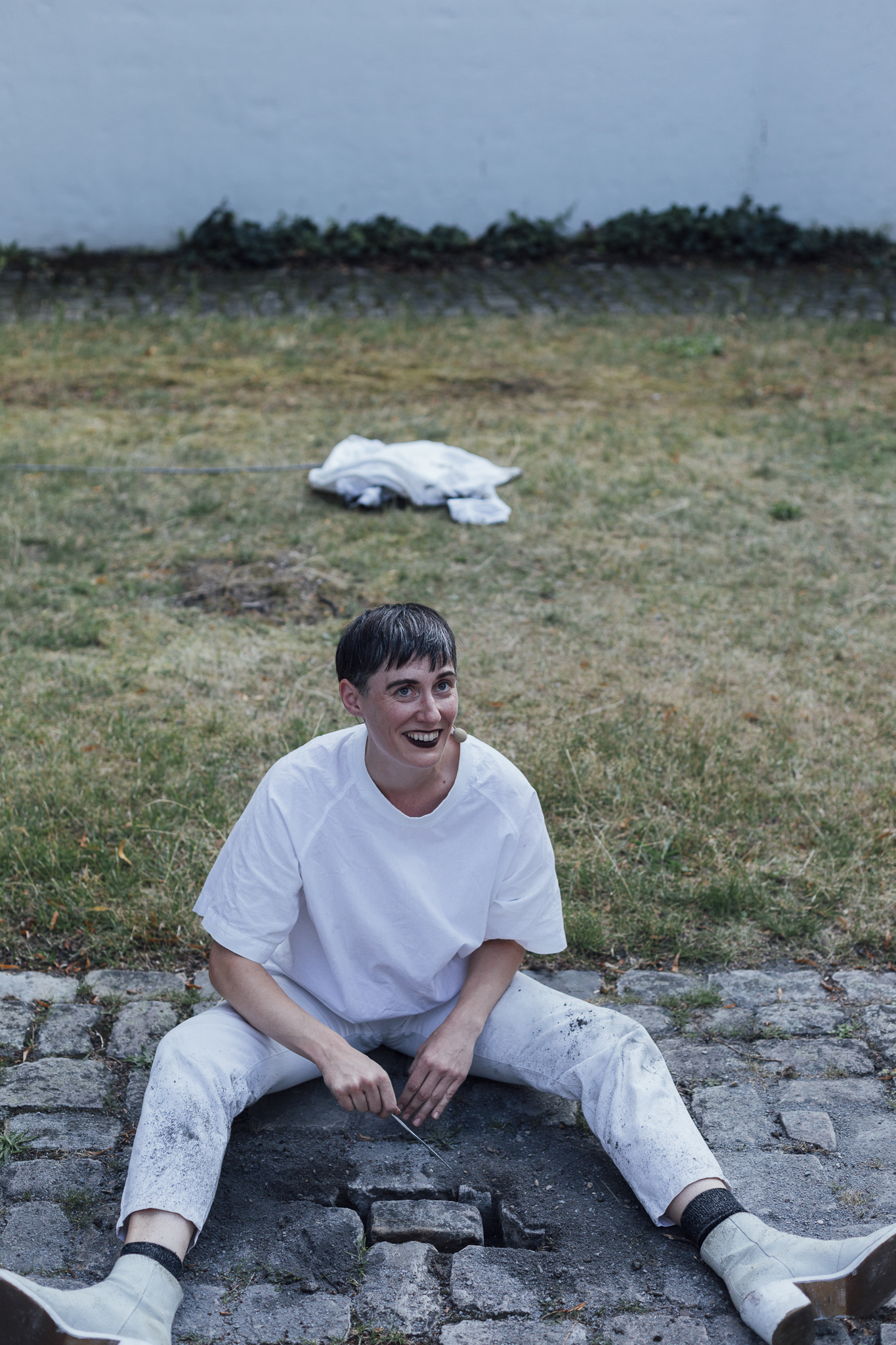



From the other side of a wall, a voice can be overheard grumbling about what became of a place. She enters the courtyard dressed in white. Chooses a cobblestone. Begins digging it up. A story is told in the first person plural, about a basement, a shaft of light, and what happens to those in its presence as she digs. At last, the cobblestone is unearthed, carried to a new location, and placed in the ground. An ode to earthworms is read. A song and dance is then performed. The beat is kept by stomping the ground. What subterranean creatures hear is amplified by a ground-penetrating geophone, which captures the sounds of digging, or rustling, of steps, of stomping. She collapses.
LOM Géofon, headset mic, butter knife, cobblestone.
Photos by Mailine Reicke
When it moves, strengthening its skin
Kunstverein Bielefeld, 30.07.2022
Bitsy Knox, Nils Amadeus Lange, Mira Mann
In the ruins of Kunstverein Bielefeld’s uncertain future, the sense of protection of the enclosure wall of the courtyard is long gone.
Bitsy Knox tells the story of the crumbling of the institutional body, gulped by worms, a digestive system that is already operating under our feet. A relationship to bodily consumption and care that echoes the shelter space of the house, having been used throughout history in turn as a brothel, a medical care center and today a Kunstverein. Darwin spent a lot of time studying earthworms, whose subterranean actions do and undo worlds, narrators of the shallows. In the artists’ speculative story of dissolutions, the digestive processes highlight the worms’ status as arbiters of the sinkage of the world’s histories. The courtyard opens up from inside, unveiling its prophetic character. Decentered at Bunnemannplatz, Mira Mann invites the K-pop dance group Iridescent Wings to perform a choreography in front of the Merkurbrunnen. The metallic fans unfold in sudden moves, sequencing the movements, playing on the legacy of the fan dance to frame the performative operations. In the well orchestrated parade, those productive gaps allow for other kinds of passages: the ones of memory and knowledge that accompany the fluxes of cultural codes. The synchronized choreography takes place in front of Mercure, roman god of commerce, suggesting the dynamics that penetrate both the bodies of the individual and the collective: a desire to achieve TikTok fame or a dissipation in well orchestrated capitalist rationalization. Iridescent Wings, the group’s name, further insists on the challenges of subject formation: how to achieve self-actualization under the unifying effect of representation?
The walk back to the Kunstverein for Nils Amadeus Lange’s contribution is accompanied with the latent melancholy of the afternoon. In the courtyard, he overperforms lamentations,
allowing us to grasp the notion of “being together” through the exercise of mourning: the body through which the community speaks (or cries) is within each member of the audience. The object of despair is left unknown, leaving the weeping act bare. It is a disappearing act, a negation of public accessibility to better extend the stage to the audience, ripe for the enactment of collectively experienced drama.
When it moves, strengthening its skin stages itself as a shared resurrection through the diligence of worms, glistening wings and streams of exacerbated melancholy. The performances are a series of rites that don’t ground themselves on the authority of a central symbolic power, preferring a vulnerable ground that allows for unexpected encounters, undoing the defined body of the audience. The religiosity of the afternoon, with its tolerated transcendance, serves this more general purpose of displacement. Crackles, digestive processes, resonant echoes of footsteps, K-pop dance moves, fan dance and TikTok fame, exercises of laments, collective despair, crying one’s heart out; they all punctuate the steady ground, bell rings of a fragmented yet communal experience.
Text by Paolo Baggi
